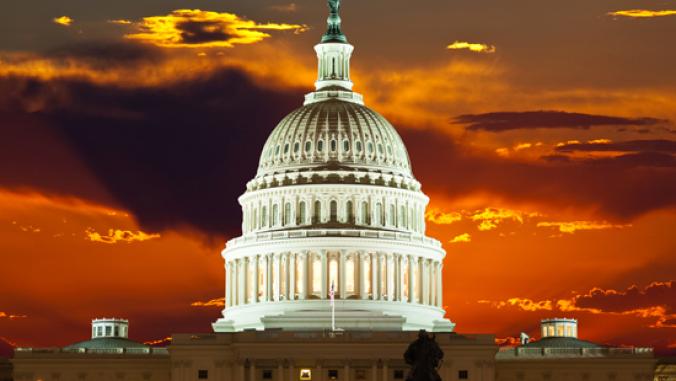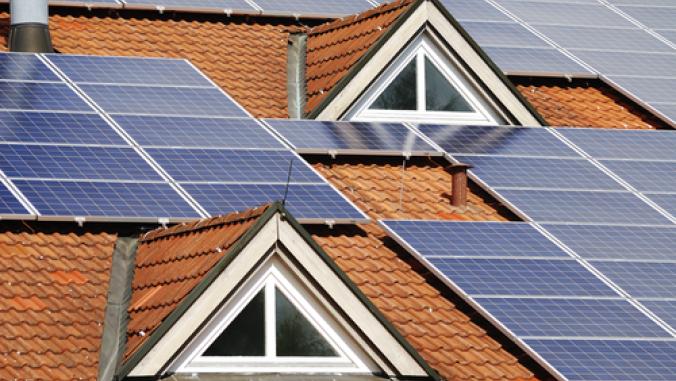The Hits and Misses in Obama's Jobs Speech
<p>The president last night laid out a balanced and pragmatic program to boost the economy through creating green jobs. But -- even if it is approved by Congress -- is it going to be enough?</p>

Last night, President Obama unveiled his much-anticipated program, the $447 billion American Jobs Act, to jumpstart the faltering American economy. Here's my reaction.
I grade the proposal a solid B+. The President didn't fly me to the moon, but he laid out a balanced and pragmatic program of tax cuts and federal spending that, if passed by Congress, will give the American economy a boost -- albeit possibly not as big a boost as it needs.
The Pluses
The President's proposal is carefully calibrated to the art of the possible. The American Jobs Act is balanced between tax cuts to satisfy Republicans ($245 billion) and spending programs for Democrats ($202 billion). Crowd-pleasing measures are emphasized throughout the package.
On the tax cut side, businesses and many consumers will no doubt welcome $240 billion in payroll tax reductions. Additional tax incentives proposed in the American Jobs Act include the extension into 2012 of immediate, 100 percent deductions for investment in plant and equipment, and tax credits for hiring returning veterans and the long-term unemployed.
Both the 100 percent expensing extension and the new hiring tax credits encourage private sector investment and job creation, activities that the U.S. economy needs urgently at this time.
The emphasis of the American Jobs Act on the creation of construction jobs is especially welcome, and this portion of the plan should benefit, at least in part, the energy-efficient and sustainable building sectors. Construction job spending under President Obama's proposal includes:
• The modernization of 35,000 schools ($25 billion) and community and tribal colleges ($5 billion). Funds can be used for energy-efficiency and greening, as well as repairs.
• $50 billion for the modernization of highways, transit, rail and aviation, including multi-modal facilities. Green approaches are increasingly being used for roadwork, and energy-efficiency and green construction represent a key aspect of mass transit and airport design and construction.
• $15 billion for rehabilitating vacant and foreclosed homes, businesses and community facilities. Weatherization initiatives and green certification will no doubt be utilized in this context.
• Home mortgage refinancing at 4 percent through Fannie Mae and Freddie Mac, a proposal that would enhance consumer incomes by reducing mortgage payments, indirectly benefitting home improvement and other spending.
The construction emphasis in the President's program is a good strategy. As I noted in my September 7 blog post, construction spending creates jobs across numerous disciplines, including architecture, engineering, interior design, energy audit, and the manufacture and sales of building products and supplies. Related fields also benefit, including finance, insurance, appraisal and (to track efficiency improvements) software development and sales.
Additional spending initiatives under the American Jobs Act are geared to reducing unemployment or blunting its impact. Unemployment insurance is extended and made more flexible ($49 billion); these sums are typically spent rapidly, generating a multiplier effect that boosts the economy.
Significant amounts are also proposed for rehiring laid-off teachers ($30 billion), and police and firefighters ($5 billion). The rehiring measures would restore needed and highly respected public service jobs and should be deservedly popular with the U.S. public.
Reservations
Now, some misgivings. The $447 American Jobs Act might not contain sufficient direct spending ($202 billion, 45.2 percent of the plan) to get the economy back on track. As explained succinctly by economist Paul Krugman here, here and here, the recession cost the U.S. economy over $2.1 trillion in lost output, suggesting (conservatively) that well over $1 trillion in spending (exclusive of tax cuts) was needed to plug the hole.
Direct spending in the 2009 stimulus totaled around $500 billion. The $202 billion in direct spending in the American Jobs Act would bring recovery spending to just over $700 billion -- still well short of the $1 trillion or more that many economists believe is needed.
Will the $245 billion in tax cuts recommended in the American Jobs Act create significant expansion? Tax cuts indeed generate economic growth, but they are somewhat less expansion-inducing than federal spending. That's because tax cuts are in part saved or used to pay down debt.
This has been especially true in the last several years, as consumers and private businesses use available cash to deleverage and restore depleted balance sheets. It's unclear at this point whether the American Jobs Act tax cuts will induce the intended economic expansion.
All told, I think that the President has crafted a balanced and pragmatic proposal with numerous crowd-pleasing components. I'm concerned, though, that the direct spending in the American Jobs Act may not produce the desired economic push.
One last point: the $240 billion in employer and employee payroll tax cuts proposed by the President lessen amounts paid into Social Security and Medicare, thereby reducing, however marginally, the solvency of these programs. This may be a good tradeoff in the service of immediate economic expansion, but the tradeoff and its implications should be explained to the American people.





